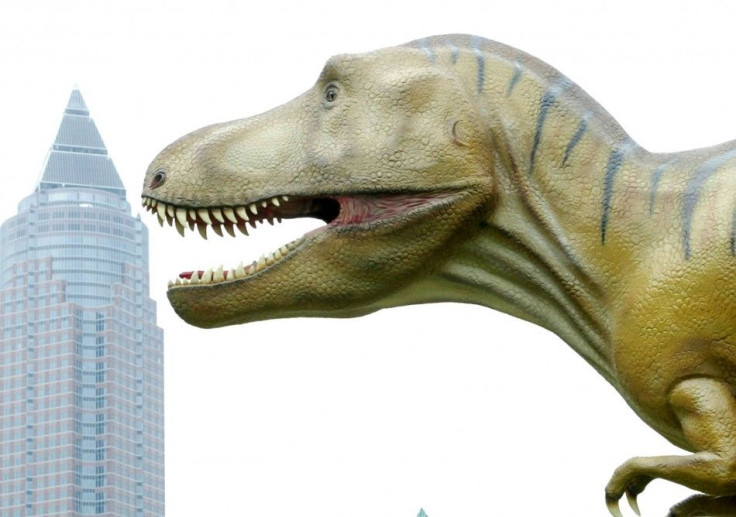Tyrannosaurus Rex Was 30 Percent Bigger, Much Hungrier Than Thought, Study

The already monstrous Tyrannosaurus Rex is believed to be 30 percent bigger and was much hungrier than previously thought, a new study shows.
Researchers say the Tyrannosaurus Rex grew faster and weighed more than previously thought, which could indicate that the fearsome predator might have been a greedy teenager.
A new study published in the journal PLoS ONE earlier this week noted that scientists increased the estimated size of the T. rex based on new analysis of five different skeletons.
British and U.S. scientists used three-dimensional laser scans and computer modeling for five T. rex specimens that included the Chicago Field Museum's Sue, which is said to be the largest and most complete T. rex skeleton known.
The study was done by scientists at The Royal Veterinary College and The Field Museum of Natural History in Chicago, Ill. The team then added flesh to the digital skeletal frameworks of the T. rex to estimate how much the large predatory dinosaurs would have weighed. They used the soft tissue structure of birds and crocodiles as a reference point.
The scientists concluded that Sue would have weighed more than 9 tons, or some 30 percent more than expected.
The smallest and youngest specimen used for the research weighed less than thought, and has led researchers to believe that T. rex grew more than twice as fast between 10 and 15 years of age as suggested in a study five years ago.
At their fastest, in their teenage years, they were putting on 11 pounds or 5 kilograms a day, John Hutchinson of the Royal Veterinary College in London told Reuters in an interview. Just think how much meat that is. That's a hell of a lot of cheeseburgers... it's a whole lot of duck-billed dinosaurs they needed to be chowing down on.
Study researcher Peter Makovicky of the Field Museum of Natural History in Chicago said previous methods for calculating mass relied on scale models, which can magnify even minor errors, or on extrapolations from living animals with very different body plans from dinosaurs.
The study noted that there are some potential inaccuracies to include subjectivity and incomplete skeletons. However, at the very least it helps to explain the T. rex's anatomy -? its short arms, thick stomach and strong hind legs.
The team found that as T. rex grew it became slower, perhaps because its torso got longer and heavier while its limbs grew relatively shorter and lighter. The result is said to have shifted its center of gravity forward.
That shift changes a lot of the inertial properties, by shifting the mass forward you're shifting the pivot point away from the hips, which is the natural pivot, so that requires bigger muscles, Makovicky told LiveScience. T. rex has pretty large, in fact, enormous leg muscles, probably the largest leg muscles of any creature that ever lived, but a lot of that leg muscle had to stabilize the animal and didn't translate into speed.
The juveniles were said to be relatively faster and more agile than the adults.
Also Read: Germany's Defunct ROSAT Satellite Fall Site Remains a Mystery
© Copyright IBTimes 2025. All rights reserved.






















